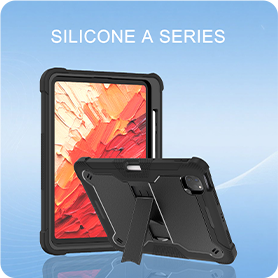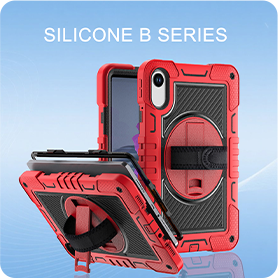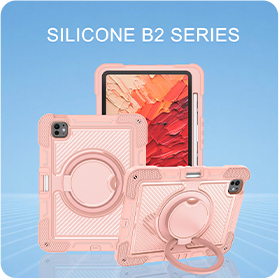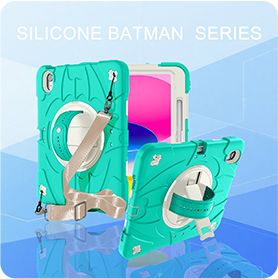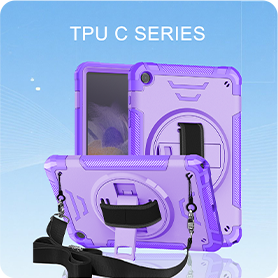- 1
- BLACKL
- TABLET
- CATEGORIES
As Users of Tablet Cases, Do Suppliers Truly Understand the Pain Points We Face?
In today’s fast-paced world, tablets have become an indispensable part of daily life for many people. Whether used for work, entertainment, or education, these versatile devices are often taken everywhere, from home to office, from classroom to coffee shop. However, as tablet users, there is a common concern that often goes overlooked: the protection of our valuable devices. A shockproof tablet case is a must-have accessory, but do suppliers truly understand the real pain points that users face when choosing a case?
The Importance of a Shockproof Tablet Case
Tablet cases are not merely aesthetic accessories. They play a critical role in ensuring the longevity and durability of our devices. Tablets are prone to drops, scratches, and other damages, which can lead to costly repairs or replacements. A shockproof tablet case provides the necessary protection to absorb shocks and minimize damage in case of an accident. Yet, for many users, finding the perfect case that addresses all their concerns remains a challenge.
Pain Point #1: Weight and Bulkiness
One of the most common complaints among tablet users is the weight and bulkiness of their cases. A shockproof tablet case is meant to offer protection, but too often, it comes at the expense of portability. Tablets are meant to be lightweight and easy to carry, and adding a heavy, bulky case defeats the purpose of having a portable device in the first place. Suppliers must understand that users want a balance between protection and convenience. A shockproof tablet case should not make the tablet cumbersome to use or carry around.
Pain Point #2: Lack of Durability and Effectiveness
While many cases claim to be shockproof, not all live up to their promises. Users often find that cases which appear to be sturdy and durable at first glance may not provide adequate protection against drops or impacts. The materials used in these cases are crucial, and users are increasingly demanding better quality. Suppliers need to focus on providing cases that truly offer shock absorption and protection, without compromising on comfort or usability.
Pain Point #3: Limited Design Options
Another issue that tablet users face is the lack of design variety in tablet cases. While protection is the top priority, users also care about aesthetics. A shockproof tablet case should not only be practical but also visually appealing. Unfortunately, many cases on the market offer limited color options or unappealing designs. Suppliers need to acknowledge that users want a product that reflects their personality while also serving its protective function.
Pain Point #4: Incompatibility with Other Accessories
Many tablet cases, especially those that are marketed as shockproof, are designed in such a way that they do not work well with other accessories, such as keyboard docks, stands, or screen protectors. This can be frustrating for users who rely on multiple accessories to maximize their tablet’s functionality. A shockproof tablet case should be compatible with a range of other accessories, allowing users to seamlessly integrate their device into their workflow or entertainment setup.
Pain Point #5: Price vs. Value
Lastly, price is a critical factor for many tablet users. While it’s understandable that a high-quality, shockproof tablet case will cost more than a basic one, users often find it difficult to justify the higher price when the benefits do not match the cost. Suppliers need to be transparent about the value their products offer. Users are willing to invest in a shockproof tablet case that offers reliable protection and additional features, but they expect that the price will reflect the quality and durability of the product.
What Suppliers Can Do to Address These Pain Points
To truly meet the needs of tablet users, suppliers need to listen carefully to feedback and make adjustments to their products. The best shockproof tablet case will be lightweight yet durable, offering superior protection without adding unnecessary bulk. The materials used should be high-quality, providing real shock absorption and lasting durability. Additionally, there should be a wide variety of designs and colors to choose from, catering to the individual tastes and preferences of users.
Furthermore, suppliers should ensure that their cases are compatible with other popular tablet accessories, allowing for seamless integration. By addressing these pain points, suppliers can create a product that not only protects the tablet but also enhances the overall user experience. Users will feel more confident in their choice of case and will be more likely to recommend it to others.
Conclusion
As users of tablet cases, we all have our frustrations when it comes to finding the right protection for our devices. Suppliers must understand that the perfect shockproof tablet case is one that strikes a balance between protection, usability, and design. By listening to the pain points of users and delivering products that truly meet their needs, suppliers can build a loyal customer base and improve the overall tablet case market.
.png)
+86 13422271740
.png)
info@tongmeitech.com
.png)
No. 34, Mashe Section, Guihe Road, Lishui Town, Foshan, Guangdong, China
